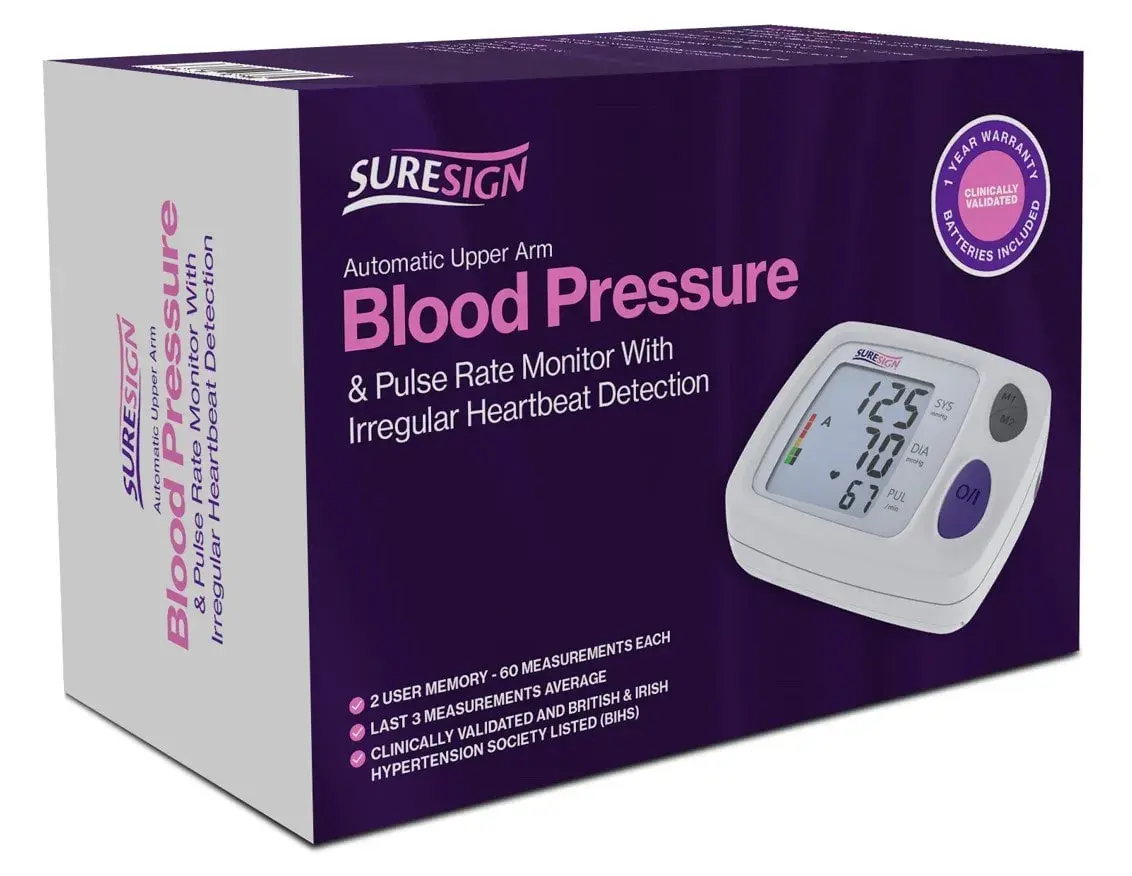Is 140 Over 70 a Good Blood Pressure Reading?
Blood pressure is both a mystery and a cause of worry for many people. But what is a ‘good’ blood pressure reading, and how do you know when there is cause for concern? Let’s break this down.
If you’ve ever had a blood pressure reading in a hospital or at your GP's clinic, they may have given you a figure, such as 140 over 70 or 120 over 80. More often than not, this figure will have been dashed out without any explanation, leaving you to smile and nod without being any the wiser. This may be understandable for professionals who take dozens of blood pressure readings each day, but it is not very helpful for individuals and has implications for their health.
However, when it comes to measuring your blood pressure, understanding the result is essential to maintaining good health, so is a reading of 140/70 considered normal or concerning?
Here’s what you need to know.
What Do The Numbers Mean?
Blood pressure readings consist of two numbers measured in millimetres of mercury (mmHg):
-
Systolic pressure (the first number) – this is the force your heart exerts when pumping blood.
-
Diastolic pressure (the second number) – this indicates the pressure in your arteries when your heart is at rest between beats.
For a reading of 140 over 70, therefore, the systolic pressure is 140 mmHg and the diastolic pressure is 70 mmHg.
What Is Normal Blood Pressure?
According to medical guidelines, ‘normal’ blood pressure is typically 120/80 mmHg or below. A systolic reading of 140 mmHg is classified as Stage 1 Hypertension (high blood pressure), even though the diastolic pressure of 70 mmHg falls well within the normal range.
This means that while 70 is an ideal diastolic level, the elevated systolic number could indicate the need for lifestyle adjustments or further monitoring. Persistent high systolic pressure puts strain on your heart and increases the risk of health issues such as heart disease or stroke.
The following ranges are widely used as benchmarks:
-
Normal: Less than 120/80 mmHg
-
Elevated: 120–129/<80 mmHg
-
Hypertension (Stage 1): 130–139/80–89 mmHg
-
Hypertension (Stage 2): 140 or higher/90 or higher
Proactive Monitoring With Our Suresign Blood Pressure Monitor
Tracking your blood pressure regularly at home is one of the easiest ways to stay informed about your heart health. The Suresign Blood Pressure Monitor has a user-friendly design that makes it easy-to-use at home, and uses advanced technology to deliver consistent, accurate, and precise results. Investing in a blood pressure monitor helps you stay on top of your readings with minimal effort, giving you greater peace of mind and control of your health.
Find Out More
Take charge of your well-being this summer by adding blood pressure monitoring to your routine. Whether you want to keep your numbers in the normal range or identify the early signs of hypertension, the Suresign Blood Pressure Monitor is your trusted health companion.
Please contact us today to find out about your nearest stockist, or to discover the benefits of stocking Suresign products and self-test kits in your pharmacy.
Posts by topics
- self-testing kits (31)
- Home Testing Kits (28)
- Pregnancy tests (15)
- Uti home test kits (11)
- Home Blood Pressure & Pulse Monitor (9)
- Pregnancy (8)
- Blood Pressure Monitors (7)
- Vitamin D Testing Kits (7)
- 6-day Early pregnancy tests (4)
- Blood Test Kit (4)
- Iron deficiency test (4)
- Diabetes journey (3)
- Uncategorised (2)
- Urine Test Kit (2)
- Business Awards (1)
- Covid-19 (1)
- Frogs as pregnancy tests (1)
- Gestational Diabetes (1)
- Home Ovulation Tests (1)
- Managing Chronic Conditions (1)
- Pharmacy (1)
- Repeat UTIs (1)
- Twin Pregnancy (1)
- false positive (1)
Recent Posts
Subscribe to our blog
Share this
You May Also Like
These Related Stories
How Blood Pressure Monitors Are Crucial For Monitoring Low Blood Pressure


How Blood Pressure Monitors Are Crucial For Monitoring Low Blood Pressure
May 14, 2025 10:00:00 AM
2
min read
What Pharmacists Should Say About The Dangers Of Heatstroke


What Pharmacists Should Say About The Dangers Of Heatstroke
Oct 1, 2024 12:00:00 AM
2
min read
A Guide To Using A Home Blood Pressure & Pulse Monitor With Irregular Heartbeat Detection


A Guide To Using A Home Blood Pressure & Pulse Monitor With Irregular Heartbeat Detection
Feb 8, 2024 12:30:00 PM
2
min read




No Comments Yet
Let us know what you think